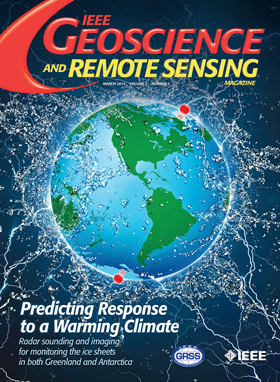The IEEE Geoscience and Remote Sensing Society “Open PocketQube Kit”: An affordable open source approach to Earth observation missions [Education in Remote Sensing]
IF 16.2
1区 地球科学
Q1 GEOCHEMISTRY & GEOPHYSICS
引用次数: 0
Abstract
CubeSats are now serving a wide range of applications beyond their original educational intent. Private companies are deploying large constellations for Earth observation and machine–to–machine communications. Their growing popularity and increased performance have raised the demand for reliability and costs. Today, it is becoming increasingly difficult to find subsystems providers, and the trend is to find fully integrated platforms on the market. Therefore, paradoxically, CubeSats are becoming less accessible to universities and research institutions than a few years ago. To overcome these problems, the PocketQube concept was invented. PocketQubes measure 50 × 50 × 50 mm³ and offer a cost-effective option, notably for education. These picosatellites can perform simple missions like Internet of Things communications or upper-atmosphere observations, ionosphere studies, or signal integrity tasks, while students face design challenges similar to larger satellites. This article presents the IEEE Geoscience and Remote Sensing Society (GRSS) “Open PocketQube Kit” educational initiative. Developed by the NanoSat Lab at the Polytechnic University of Catalonia (UPC), it is an affordable open source educational kit featuring a complete PocketQube structure with all the subsystems: an electrical power supply (EPS), attitude determination and control system (ADCS), an STM32-based onboard computer (OBC), long-range (LoRa) communications, and payload. Three different PocketQube models have been developed: PoCat-1, with a video graphics array (VGA) camera, and PoCat-2 and PoCat-3 for monitoring radio-frequency interference (RFI) at the L-band (1–2 GHz) and K-band (24–25 GHz) to track 5G spectrum emissions.电气和电子工程师学会地球科学与遥感学会 "Open PocketQube Kit":负担得起的地球观测任务开源方法[遥感教育]
立方体卫星现在的应用范围已经超出了其最初的教育目的。私营公司正在部署用于地球观测和机器对机器通信的大型星座。立方体卫星越来越受欢迎,性能越来越高,因此对可靠性和成本的要求也越来越高。如今,越来越难找到子系统供应商,市场上出现了完全集成的平台。因此,矛盾的是,与几年前相比,立方体卫星越来越难以被大学和研究机构所接受。为了克服这些问题,我们发明了 PocketQube 概念。袖珍立方体的尺寸为 50 × 50 × 50 立方毫米,是一种具有成本效益的选择,尤其适用于教育领域。这些皮卫星可以执行简单的任务,如物联网通信或高层大气观测、电离层研究或信号完整性任务,而学生们面临的设计挑战与大型卫星类似。本文介绍了电气和电子工程师协会地球科学与遥感学会(IEEE Geoscience and Remote Sensing Society,GRSS)的 "Open PocketQube Kit "教育计划。该套件由加泰罗尼亚理工大学(UPC)纳米卫星实验室开发,是一种经济实惠的开源教育套件,具有完整的 PocketQube 结构,包含所有子系统:电力供应(EPS)、姿态确定和控制系统(ADCS)、基于 STM32 的星载计算机(OBC)、远程(LoRa)通信和有效载荷。目前已开发出三种不同的 PocketQube 型号:PoCat-1配有视频图形阵列(VGA)摄像头,PoCat-2和PoCat-3用于监测L波段(1-2 GHz)和K波段(24-25 GHz)的射频干扰(RFI),以跟踪5G频谱发射。
本文章由计算机程序翻译,如有差异,请以英文原文为准。
求助全文
约1分钟内获得全文
求助全文
来源期刊

IEEE Geoscience and Remote Sensing Magazine
Computer Science-General Computer Science
CiteScore
20.50
自引率
2.70%
发文量
58
期刊介绍:
The IEEE Geoscience and Remote Sensing Magazine (GRSM) serves as an informative platform, keeping readers abreast of activities within the IEEE GRS Society, its technical committees, and chapters. In addition to updating readers on society-related news, GRSM plays a crucial role in educating and informing its audience through various channels. These include:Technical Papers,International Remote Sensing Activities,Contributions on Education Activities,Industrial and University Profiles,Conference News,Book Reviews,Calendar of Important Events.
 求助内容:
求助内容: 应助结果提醒方式:
应助结果提醒方式:


